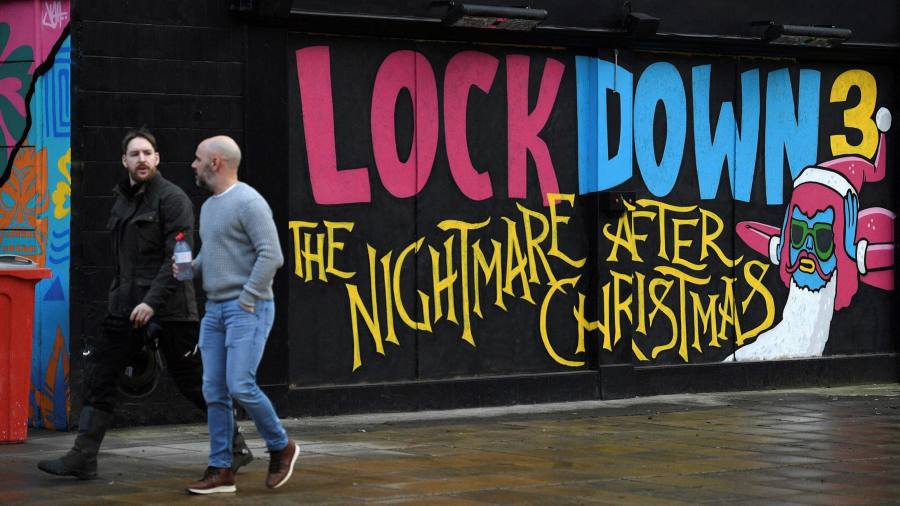[ad_1]
Prime minister Boris Johnson on Friday put the finishing touches to his road map to lift England’s lockdown from next month, as new data suggested that Covid-19 infections were falling by 3-6 per cent per day.
Johnson will on Monday confirm plans for a mass return to school on March 8, but then proceed with a “prudent†reopening of much of the economy by the summer. He has said he wants to ensure “cautious but irreversible†progress in tackling the virus which has caused nearly 120,000 deaths.
Government insiders say the publication of the road map will see a decisive shift away from strict legal restrictions — backed by heavy fines — towards an approach based on encouraging people to take care.
The one-metre social distancing rule is under review but people will still be urged to wash their hands and wear masks to control the spread of the disease as the economy gradually opens.
Government scientists on Friday put the official estimate of R, the average number of people to whom someone infected passes the virus, is in the range 0.6 to 0.9 for the UK as a whole. A week ago the range was 0.7 to 0.9.
Supporting the R number estimates, infection surveys of random samples of the population — released by Imperial College London on Thursday and by the Office for National Statistics on Friday morning — showed marked declines in positive tests for coronavirus.Â
“These revisions of the ranges for R and the growth rate are more good news,â€Â said Kevin McConway, emeritus professor of applied statistics at the Open University.
“Things are definitely moving in the right direction and fairly fast but there is still a long way to go. Vaccinations will help more and more, but things are nowhere near back to normal yet and won’t be for a long time.â€
Johnson’s plan, to be announced on Monday, will set out the “earliest date†by which certain sectors and activities can resume, echoing the approach adopted when England came out of its first lockdown in May 2020.
The prime minister will not repeat problematic parts of a later plan to ease lockdowns; the regional tiered system — which set different restrictions in different parts of the country depending on infection levels and pitted cities like Manchester against Downing Street.
Target dates will be set — with schools expected to reopen first, followed by non-essential shops and then pubs and restaurants — with a proviso that deadlines could slip, notably if highly transmissible new variants emerge.
As with previous reopenings, hospitality is expected to start initially with a focus on operating outdoors, with April pencilled in by some ministers as a likely date for pubs to serve takeaway pints.
Officials close to the road map preparations say they will also do away with a requirement that pubs serve a “substantial meal†alongside alcohol — the controversial “Scotch egg†clause.
Each loosening point is likely to be followed by a two- to three-week interval so its impact on the virus’s reproduction rate, infections and hospitalisations can be assessed.
Meanwhile Rishi Sunak, chancellor, is finalising his March 3 Budget to take account of what Treasury officials call a “cautious†reopening of the economy.
Policies such as the furlough scheme and a business rate holiday are expected to be extended into the summer, while the Budget will have a heavy focus on supporting jobs and skills.
Sunak has previously been an enthusiastic advocate for reopening the economy as quickly as possible, but one aide said: “We need to do this as carefully as possible — we need to get this right.â€
Conservative MPs are pushing for pubs and restaurants to reopen by Easter, but Johnson is cautious: he will argue on Monday that scientific data on the effectiveness of vaccines in stopping transmission is not yet conclusive.
Although he has referred to “straws in the wind†over the effectiveness of the BioNTech/Pfizer vaccine, Downing Street said evidence on the Oxford/AstraZeneca jab was not yet conclusive. A Public Health England chapter relating to vaccines will accompany the road map.
[ad_2]
Source link





